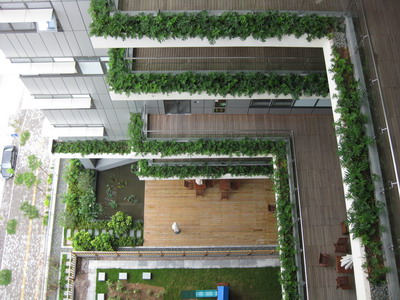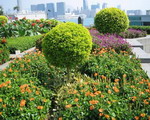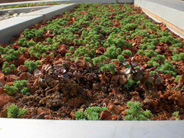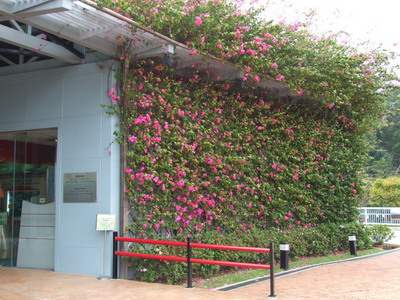Skyrise greening represents a new concept of greenery in urban landscape. In a broad sense, it encompasses all greening at the buildings or other structures beyond the ground level, including roof greening, vertical greening, sky gardens, terrace planting, etc. Skyrise greening provides environmental benefits as well as enhances aesthetic quality of our urban environment. For implementation of skyrise greening, there are two main approaches: roof greening and vertical greening.
Roof greening is characterized by planting works on structural slabs, i.e. non at-grade planting, with main focus on the horizontal dimension. It is formed on rooftop and/or other parts of buildings or structures by means of intensive green roof and/or extensive green roof.
Intensive green roof usually consists of deeper soil depth, supports wider plant range, requires higher maintenance input, and provides access for recreational purpose. Podium gardens, roof gardens, sky gardens are typical examples of intensive green roof.
Extensive green roof usually consists of shallower soil depth, supports narrower plant range, requires lesser maintenance input, and access is provided for maintenance purpose only. Typical examples of extensive green roof include greening on top of covered walkways, rooftop of buildings, etc.
Vertical greening is formed by either planting at-grade or planting on elevated planters, aiming at creating greenery mainly on vertical surface of associated structures. Typical examples of vertical greening include planting of climbing and/or weeping plants along the edges of buildings or structures, planting of other suitable plants on stacks of modular planters or panels, or combination of both.



